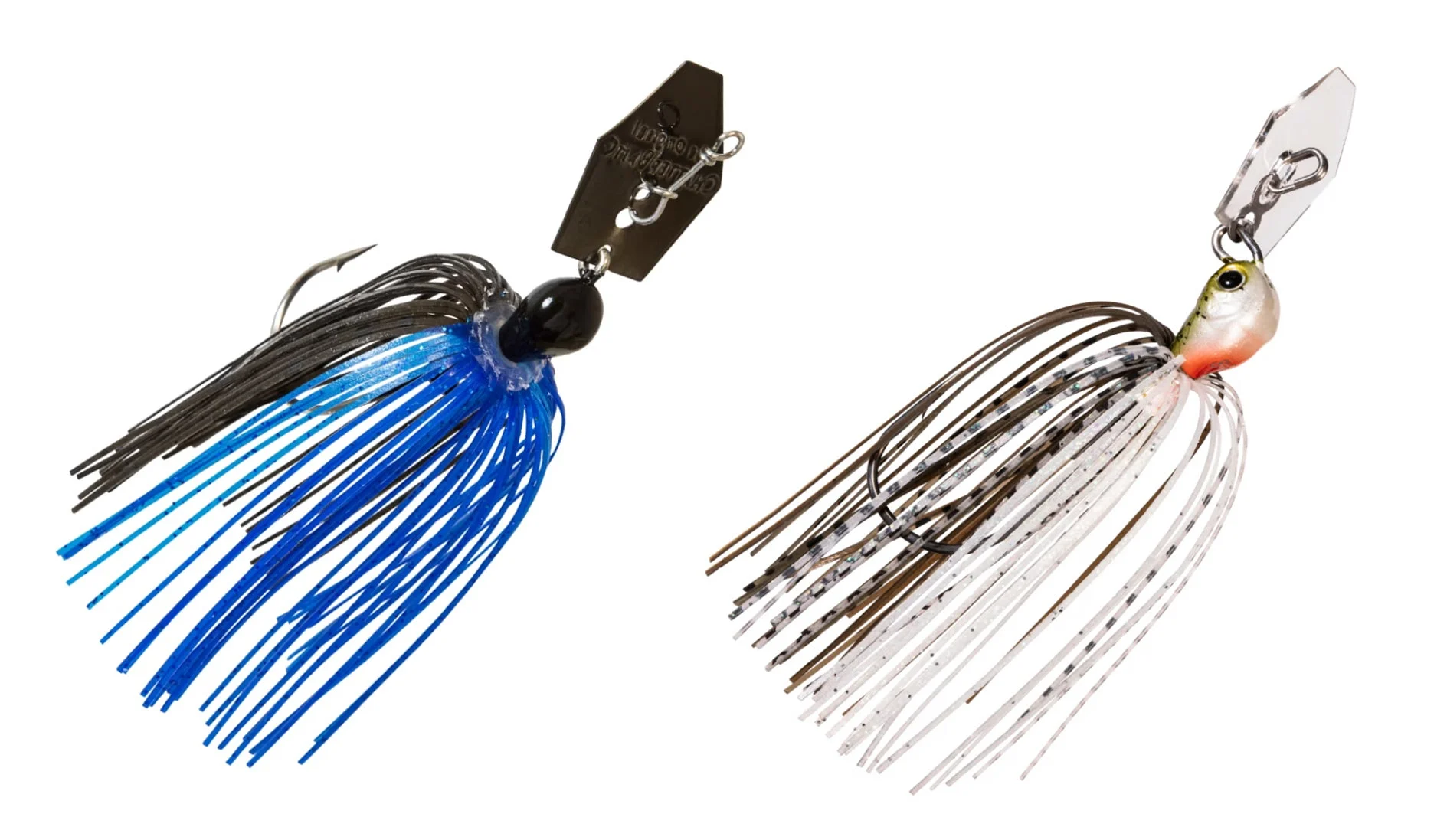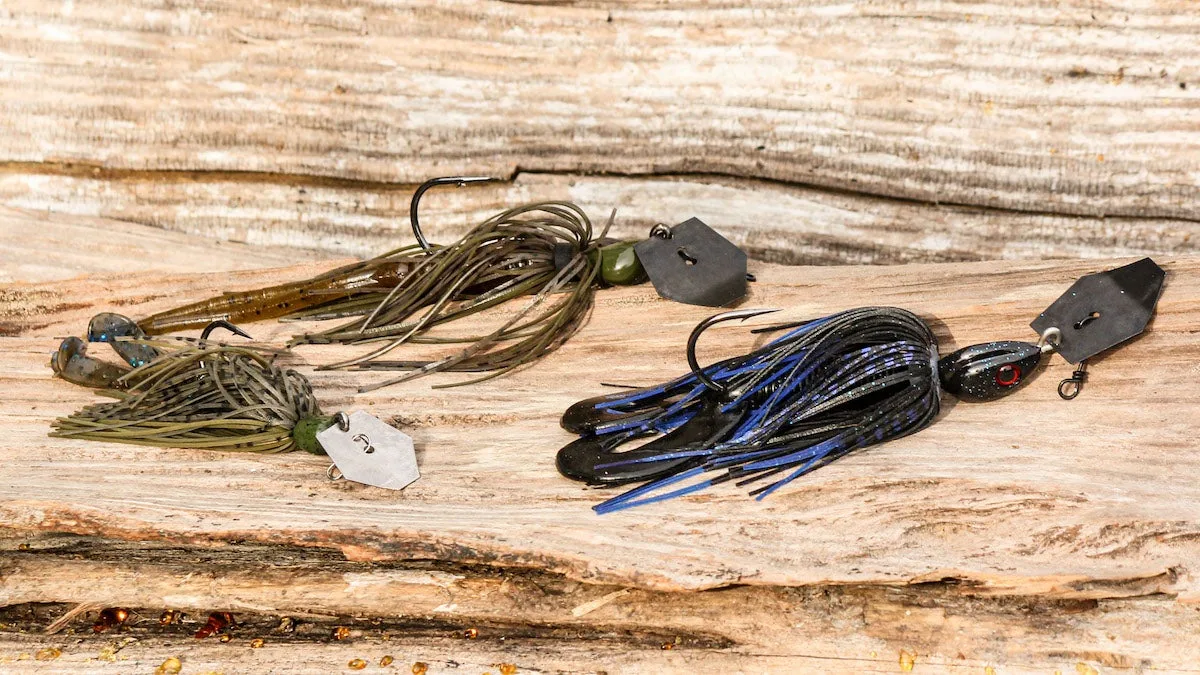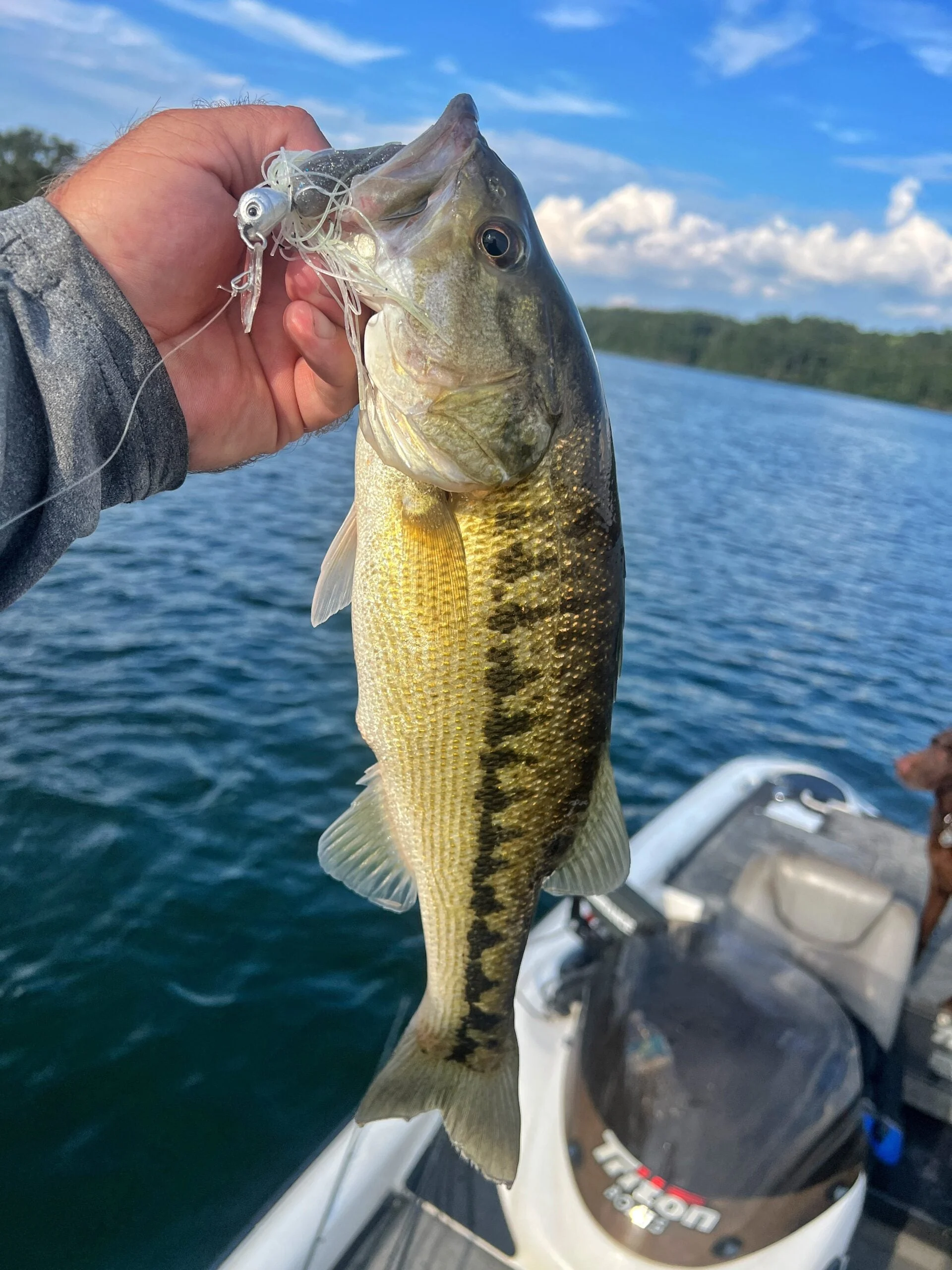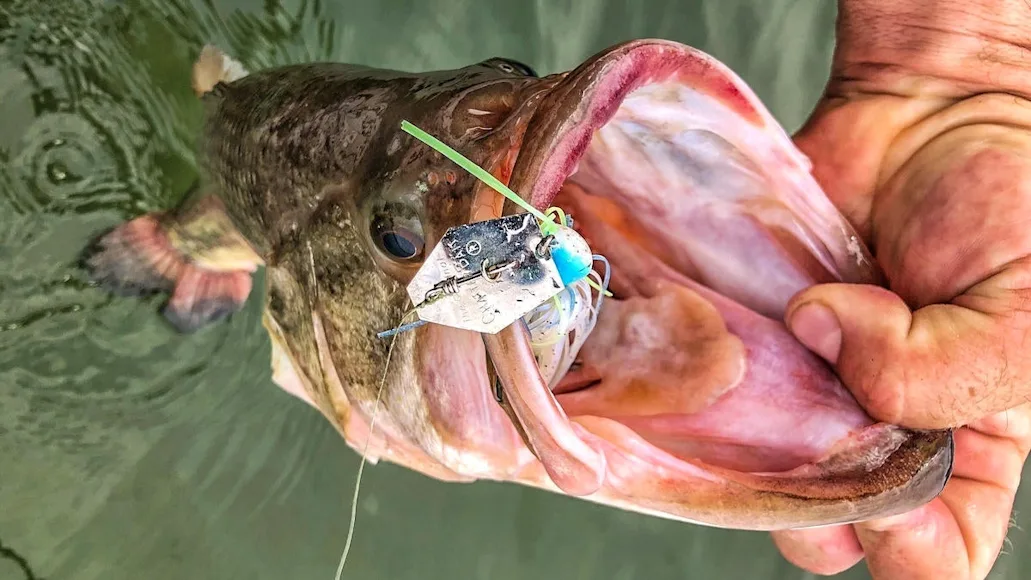We may earn revenue from the products available on this page and participate in affiliate programs. Learn more ›
Chatterbaits are one of the hottest bass lures going, so maybe you’re wondering what all the fuss is about. Or maybe you just want to know, what is a chatterbait? Well, let’s start with the name itself: “Chatterbait” is actually a proper noun for the original vibrating jig made by Z-Man. Because the Chatterbait was the first lure of its kind and because these lures in general have become so popular, many anglers now refer to all vibrating jigs chatterbaits. It’s like asking for a kleenex instead of a tissue.
Chatterbaits are also often called bladed jigs, referencing the metal blade that’s typically attached to the front of what otherwise amounts to a jig. But some of these “blades” are actually made of plastic or other polymers. They all create a lot of vibration. So, for the purposes of answering the question “What is a chatterbait?” we’ll refer to these baits generally as chatterbaits, of which the Z-Man ChatterBaits are some of the best.
What is a Chatterbait—or Vibrating Jig?

A chatterbait, or vibrating jig, is simply a jig that has a hinged blade or bill attached to the eye that’s meant to cause a lot of subsurface vibration and commotion as the lure is retrieved. Here’s a closer look at each part of this simple bait.
The Blade
The blades on chatterbaits are typically made of metal and have a shiny, metallic finish that creates a lot of flash. If you want a subtler presentation, however, you can choose blades with a black or matte finish. And, as mentioned earlier, others are made of an entirely different material, like the blade of the Z-Man Evergreen Chatterbait Jack Hammer Stealth Blade, which is made of clear polycarbonate. A clip, split ring, or twisted metal wire is added to the blade to create a line-tie, so that the bait can be attached to the line.
The Jig

The jig part of a chatterbait usually has a vertical eye that attaches directly to the blade via a small hole. Unlike most jigs, chatterbaits (with a few exceptions) do not have weedguards. These jigs are typically skirted and come in a wide range of color choices. The heads are often painted to match the skirts, and the hooks vary from bait to bait in size and shape. Anglers typically add some sort of soft-plastic trailer keeper to bait as well. Chatterbaits, or vibrating jigs, come in a wide range of sizes, with several brands offering baits weighing from 1/4-ounce to 3/4-ounce.
When to Fish a Chatterbait
Z-Man ChatterBaits and other vibrating jigs work well in the spring when bass are shallow and aggressive, though these baits can certainly be used to catch bass in the summer, fall, or winter. Thanks to a bass’s lateral lines, a vibrating jig is an easy bait for the fish to detect in the water. So anytime bass are relatively shallow and in the mood to eat, a chatterbait is a great choice. The heavier versions even work out in 15 feet of water or more.
Where to Fish a Chatterbait

These baits work really well in submerged vegetation, like hydrilla, milfoil, and coontail. However, this is not because vibrating jigs are inherently weedless. In fact, they often get bogged down in the weeds. But a quick snap of the bait will usually free it from submerged vegetation and the resultant burst of action from the bait is sometimes exactly what you need to get a nearby bass to bite.
These baits also work in open water and around isolated cover like docks and stumps. But a word of caution here: Chatterbaits can be a little hazardous to fish through brushpiles and laydowns, as they are prone to hanging up. If you choose to fish one of these baits through woody cover, keep your rod tip up and your line tight. This will keep the hook from rocking or rolling too far to one side, giving you the best chance to clear the cover.
How to Fish a Chatterbait

Simply reeling in a vibrating jig with a steady retrieve is often enough to draw a strike, especially when fishing near isolated cover where bass and other fish set up to ambush prey. However, in open water and around lots of cover, pausing and pumping the bait a little can help generate even more strikes. This erratic action imitates an injured or fleeing baitfish and is great for triggering bass and other predators to bite.
So, what is a chatterbait? Simply put, it’s a great fish catcher. It’s a bait that can be fished from shallow flats to deep ledges and everywhere in between. The vibration and erratic action of these vibrating jigs trigger an instinctual reaction strike as readily as any other bait out there. Whether fishing muddy water or clear, sparse cover or open water, shallow or deep, for big fish or small, a chatterbait, or vibrating jig, is a solid option for sure.


